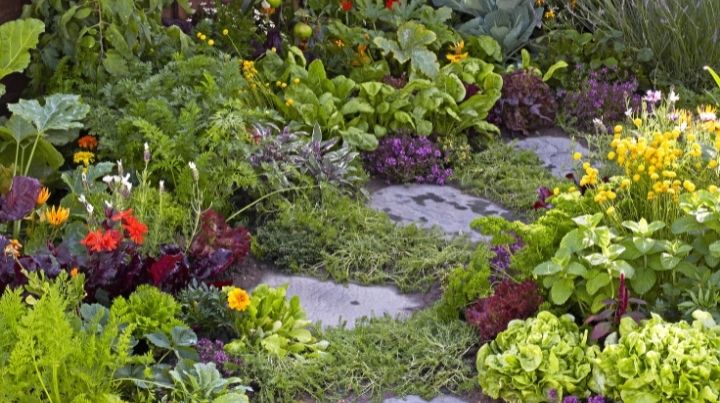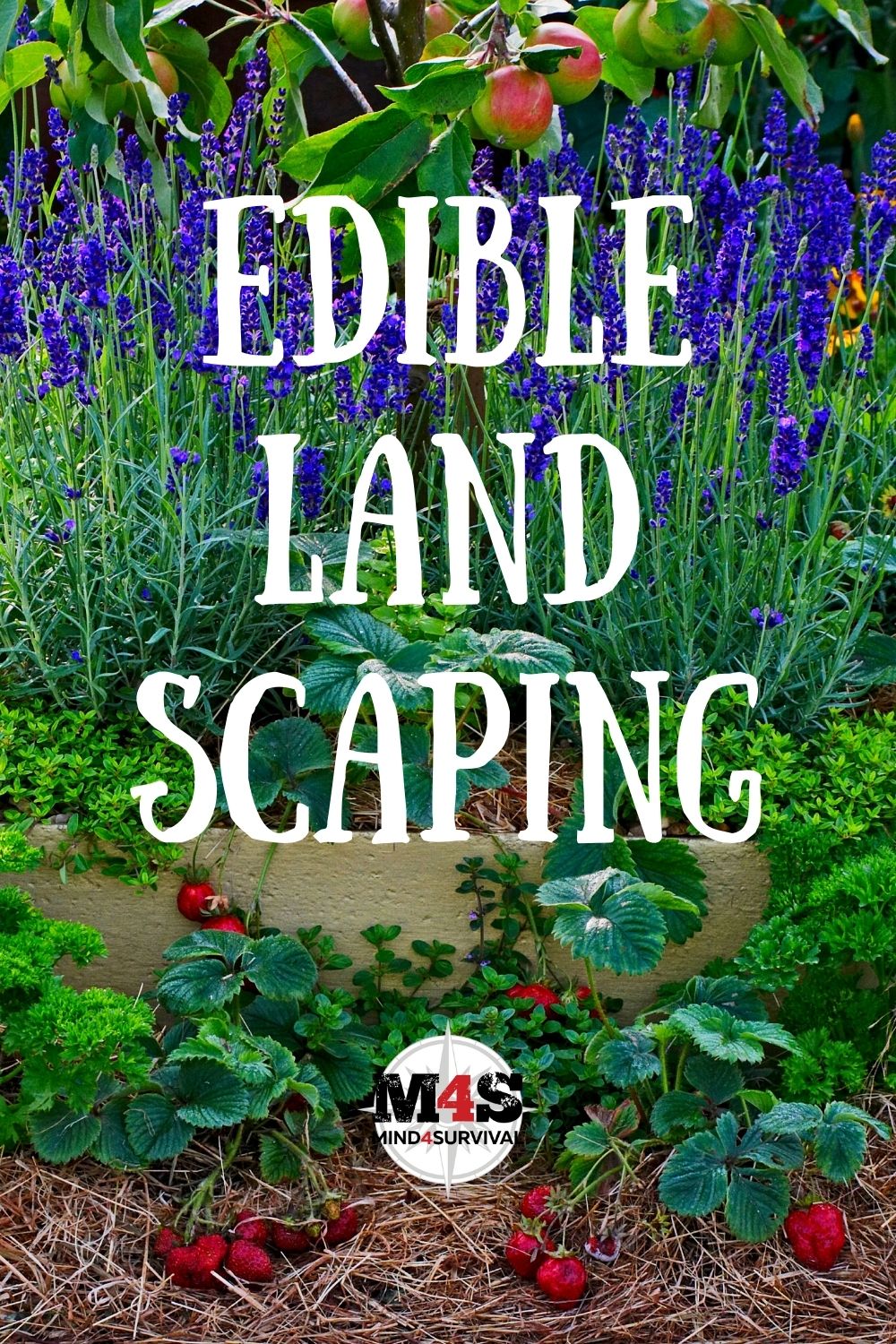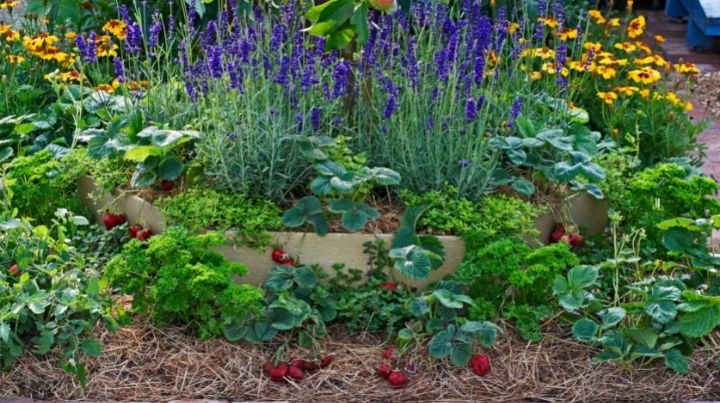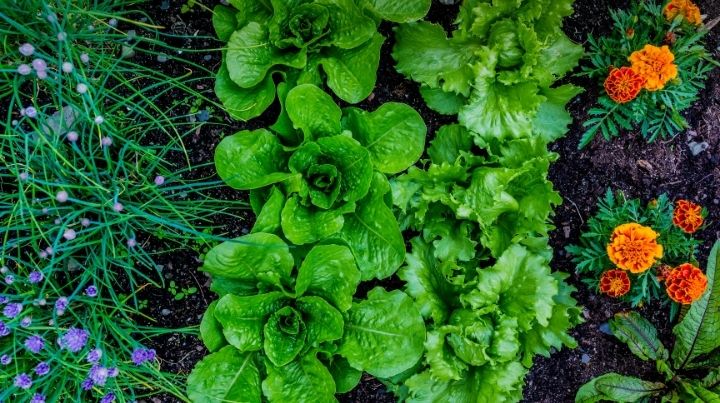Edible Landscaping: Food Hidden in Plain Sight


Edible landscaping, similar to permaculture, is taking off in a big way. Whether you’re trying to avoid a pesky HOA rule against food gardening or hoping to hide your seasonal stockpile in pain sight, edible landscaping is the way to go.
What could possibly be better than a yard full of beautiful things that you can actually eat? Grass is so passe!
What is Edible Landscaping?
Edible landscaping is exactly what it sounds like. Instead of pots and beds full of merely decorative plants, your gardens hold food in disguise. That pretty, flowering vine? Sweet potatoes! Those beautiful flowering shrubs growing along your fence? Blueberry bushes.
Some neighborhoods have very restrictive rules about food being grown. Who can forget the hullabaloo in 2012 about a front yard vegetable garden being grown in Orlando, Florida? The homeowner put it there because it got the best sunlight. But city bylaws stated that people were not allowed to grow vegetables in the front yard. The city bulldozed the thriving garden, destroying months of work. A massive lawsuit ensued, and in 2019, the state of Florida passed a law allowing front yard gardens.
However, regular laws don’t apply in properties ruled by a homeowner’s association (HOA). A homeowner’s association can pass incredibly stringent rules that mean you have to garden with stealth if you want to grow food on your property.
Are Edible Landscaping and Permaculture the Same Thing?
You might be wondering if edible landscaping is the same thing as permaculture. The answer is…sometimes. Permaculture is “permanent agriculture,” and plants that will keep producing year after year are deliberately chosen. Here’s a more thorough definition.
Permaculture integrates land, resources, people and the environment through mutually beneficial synergies – imitating the no waste, closed loop systems seen in diverse natural systems. Permaculture studies and applies holistic solutions that are applicable in rural and urban contexts at any scale. It is a multidisciplinary toolbox including agriculture, water harvesting and hydrology, energy, natural building, forestry, waste management, animal systems, aquaculture, appropriate technology, economics and community development.
Permaculture (the word, coined by Bill Mollison, is a portmanteau of permanent agriculture and permanent culture) is the conscious design and maintenance of agriculturally productive ecosystems which have the diversity, stability, and resilience of natural ecosystems.
On the other hand, edible landscaping often includes annual plants that must be replanted every season. It can be more versatile and the plants are often grown in attractive pots that add to the home’s decor.
What Plants Can You Use?
The plants you use vary widely depending on what part of the country you’re in. For example, blueberries that would run rampant in Maine would wither quickly in the blazing Arizona sun. It’s best to look to nature for your initial inspiration. What edible plants grow naturally in your area? (Another bonus to native plants is they’ll require far less maintenance since they’re meant for your particular ecosystem.)
Once you’ve established your local fauna, it’s time to start researching what will a) do well in your area and b) grow under the radar. Some popular “secret” plants are:
- Kale
- Sweet potatoes
- Scarlet runner beans
- Herbs
- Tomatillos
- Sunflowers
- Violets
- Rhubarb
- Winter squash/pumpkins (Fall decor, right?)
- Jerusalem artichokes (also known as sunchokes)
- Asparagus
- Nasturtiums and other edible flowers
- Chard
- Fruit trees
- Nut trees
- Ginger
- Berry bushes
- Red cabbage
- Leeks
- Carrots
- Collard greens
- Grapes
- Hops
- Kiwi
- Passionfruit
- Maple trees (to tap for syrup)
If you can put it in a pot or make it look pretty, you can probably slide it past the powers that be, and let’s face it, unless they’re gardeners, most people would walk right past a potato plant with no idea what it is.
Want Some Resources?
Before investing in seeds, plants, and gardening books, decide if you are trying to sneak one past the HOA vegetable police or if you want a secret food garden so that you can grow edibles in plain sight without hungry passersby realizing you have a goldmine of food.
If you’re going for esthetics, there are several books on secret gardening. Looking for inspiration? Check out Gardening Like a Ninja: A Guide to Sneaking Delicious Edibles into Your Landscape by Angela England and Wendy Piersall. Another great, HOA-defying book is The Beautiful Edible Garden: Design A Stylish Outdoor Space Using Vegetables, Fruits, and Herbs by Leslie Bennett and Stefani Bittner.
If you are hoping to hide your hoard from the hordes during the zombie apocalypse, Rick Austin has two books on gardening just for preppers. The Secret Garden of Survival and The Secret Greenhouse of Survival are both classic tomes on growing a camouflaged “food forest.”
Do You Practice Edible Landscaping?
Do you have a permaculture garden or food forest? Are you selecting ornamental plants that are also edible for your yard? What are your best tips for edible landscaping? Let’s talk about it in the comments.
Additional Resources:
- What Are the 10 Easiest Medicinal Plants To Grow?
- Learn to make the most of your harvest with The Seasonal Kitchen Companion
- Wondering if you should get a freeze dryer to help preserve your food? Best Freeze Dryer For Sale – 7 Buying Tips
- Looking for an Urban Gardening course? HERE is a great one!

Don't Miss Out!
Join the thousands of people who rely on Mind4Survival preparedness advice by subscribing to our FREE newsletter.
- Practical preparedness information
- Zero Spam
- < 0.25% of people unsubscribe




Join Mind4Survival!
Stay informed by joining the Mind4Survival! 100% Secure! 0% Spam!
Follow Us!
Affiliate Disclosure
Mind4Survival is a free, reader-supported information resource. If you make a purchase through our link, we may, at no cost to you, receive an affiliate commission.




As a I mentioned on another platform about edible landscaping, I live in an HOA in SW FL. I’ve planted on the edges of my little 1/4 acre katuk, moringa, loquats, seagrapes, cocoplums, Surinam cherries, & an orange all which have edible leaves, fruits, flowers. Because we have no real soil and tons of destructive nematodes I plant all veggies in containers, mainly Earthboxes painted white (original dark color heated up the soil too much). I combine lots of green leafy veggies with flowers like edible flowered marigolds, trailers like lemon cucumber, and edible flowered and leaved nasturtiums. In the ground I’ve planted for ground cover, both chartreuse and deep purple sweet potatoes for the leaves and native Seminole pumpkin along the back edge (borders on a greenway/ditch) where it flourishes. The HOA highly encourages border plantings be mulched, to prevent weeds, so I simply mow/mulch all trimmings or use the shredder/chipper for larger branches and spread the results among all plantings.